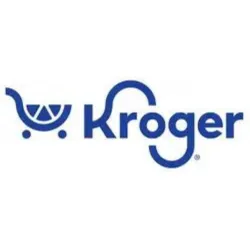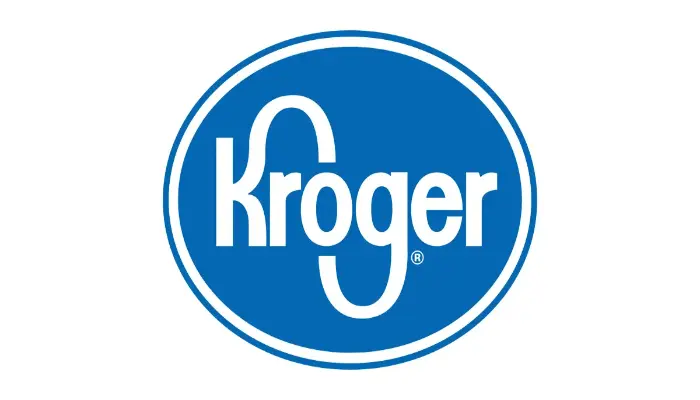Customer feedback is the lifeblood of any customer-centric organization, providing valuable insights into the customer experience. In the retail industry, such as Kroger, understanding customer sentiments helps in shaping and enhancing services, products, and overall satisfaction.
Kroger, as a leading supermarket chain, places a high value on customer satisfaction. The commitment extends beyond mere lip service, with tangible efforts to actively engage with customer feedback, ensuring a continuous improvement cycle.
The primary purpose of the Kroger Feedback Complaints Email is to directly address and acknowledge customer concerns. This proactive approach not only demonstrates attentiveness but also lays the groundwork for resolving issues promptly.
By soliciting feedback through dedicated complaint channels, Kroger aims to improve the overall customer experience. This feedback loop ensures that every customer concern is a stepping stone towards refining and optimizing various aspects of their service.
Understanding Kroger Feedback Complaints
A. Overview of Common Customer Complaints
1. Product Quality Issues
Customers often express concerns related to product quality, ranging from freshness to packaging. An in-depth understanding of these complaints enables Kroger to collaborate with suppliers and enhance quality control measures.
2. Service-related Concerns
Issues related to customer service, such as rude staff behavior or inadequate assistance, are common complaints. Addressing these concerns not only resolves immediate issues but also contributes to fostering a positive customer-staff relationship.
3. Store Cleanliness and Organization
Cleanliness and organization within stores significantly impact the overall shopping experience. Recognizing and rectifying issues related to store maintenance are key components of Kroger’s commitment to customer satisfaction.
B. Importance of Timely Resolution
1. Impact on Customer Loyalty
Timely resolution of complaints plays a pivotal role in retaining customer loyalty. Customers are more likely to remain loyal to a brand that demonstrates a proactive approach in resolving issues, showcasing a genuine concern for their satisfaction.
2. Positive Effects on Brand Reputation
Addressing complaints promptly not only preserves customer loyalty but also contributes to positive brand reputation. Satisfied customers are likely to share their positive experiences, acting as brand advocates and countering potential negative publicity.
Crafting an Effective Kroger Feedback Complaints Email
A. Subject Line Optimization
1. Importance of a Compelling Subject Line
The subject line serves as the gateway to the email content. Crafting a compelling subject line ensures that customers are enticed to open the email, increasing the likelihood of their concerns being addressed.
2. Inclusion of Keywords: “Kroger Feedback Complaints Email”
Strategic inclusion of keywords not only aligns with search engine optimization but also makes the purpose of the email explicit. This ensures that customers can easily identify and locate the dedicated channel for their feedback.
B. Introduction Section
1. Warm Greeting
The introductory section sets the tone for the email, with a warm and personalized greeting. This creates a connection with the customer, reinforcing the notion that their concerns are valued.
2. Acknowledgment of the Customer’s Feedback
Explicitly acknowledging the customer’s feedback demonstrates active listening. It reassures customers that their concerns have been noted and are being taken seriously.
3. Reference to the Nature of the Complaint
Referencing the specific nature of the customer’s complaint establishes clarity. It assures customers that their concerns have been thoroughly understood, setting the stage for a detailed resolution.
C. Body of the Email
1. Detailed Analysis of the Complaint
a. Gathering Relevant Information
The initial step in resolving a complaint is to gather all pertinent information. This includes details about the product or service in question, the time and location of the incident, and any other relevant context.
b. Categorizing the Complaint Type
Once information is gathered, categorizing the complaint type helps in streamlining the resolution process. This segmentation allows for targeted problem-solving strategies tailored to specific issues.
2. Expressing Empathy and Understanding
Empathy is a crucial component in customer service. Expressing understanding and empathy in the email fosters a positive customer experience, even in the face of challenges.
3. Outlining Planned Resolution Steps
Clearly outlining the steps that will be taken to address the customer’s concerns demonstrates transparency. It provides customers with a roadmap for the resolution process, setting expectations for the upcoming actions.
D. Providing Contact Information
1. Customer Support Contact Details
Providing easily accessible contact details for customer support reinforces the idea that Kroger is readily available to assist customers. This accessibility contributes to customer confidence in the resolution process.
2. Dedicated Helpline for Complaint Resolution
A dedicated helpline specifically for complaint resolution streamlines the process. Customers can connect with specialized support staff trained to handle complaints efficiently, ensuring a focused and effective resolution.
Emphasizing Customer-Centric Approach
A. Personalization of Responses
1. Use of Customer’s Name
Personalizing responses by addressing customers by their name adds a human touch to the interaction. It signals that the communication is tailored to the individual, not a generic response.
2. Tailoring Solutions to Individual Complaints
Recognizing the unique nature of each complaint allows for tailored solutions. This approach demonstrates a commitment to resolving issues at their root, rather than applying generic fixes.
B. Transparency in Communication
1. Clear Explanation of Resolutions
Transparent communication involves providing customers with a clear and detailed explanation of how their concerns will be addressed. This includes specifics on actions taken and expected outcomes.
2. Sharing Timelines for Resolution Implementation
Setting realistic timelines for resolution implementation manages customer expectations. It ensures that customers are informed about the anticipated duration for the resolution process, minimizing uncertainty.
Encouraging Customer Feedback Iteration
A. Seeking Additional Information
1. Request for Further Details, if Necessary
In cases where additional information is required, a polite request for further details encourages customers to actively participate in the resolution process. This collaborative approach contributes to comprehensive issue resolution.
2. Encouraging Follow-up Communication
Expressing openness to further communication encourages customers to provide ongoing feedback. This iterative feedback loop is instrumental in refining processes and preventing similar issues in the future.
B. Request for Feedback on Resolution
1. Seeking Customer Satisfaction Ratings
Asking customers to rate their satisfaction with the resolution process quantifies success. It provides valuable metrics for evaluating the effectiveness of the resolution strategies implemented.
2. Providing Links for Additional Comments
Offering links for additional comments allows customers to provide nuanced feedback beyond a simple satisfaction rating. This detailed feedback is invaluable for continuous improvement efforts.
Technical Considerations in Kroger Feedback Complaints Email
A. Ensuring Compatibility with Various Email Clients
1. Responsive Design for Mobile Users
Given the diverse range of devices customers use, ensuring responsive design in emails is critical. Mobile users, in particular, should have an optimal viewing experience, contributing to accessibility.
2. Compatibility with Common Email Platforms
Emails must be compatible with various platforms to reach the broadest audience. Compatibility ensures that the content is delivered seamlessly, enhancing the overall customer experience.
B. Avoiding Spam Filters
1. Compliance with Email Standards
Adhering to email standards reduces the likelihood of emails being flagged as spam. Compliant emails are more likely to reach customers’ inboxes, ensuring that important communications are not overlooked.
2. Optimal Use of Keywords: “Kroger Feedback Complaints Email”
Strategically using keywords relevant to the email’s purpose improves searchability. This practice not only aligns with search engine optimization but also assists customers in locating the dedicated channel for their feedback.
Case Studies and Examples
A. Showcasing Successful Resolution Stories
1. Highlighting Customer Satisfaction
Sharing success stories where customer complaints were resolved satisfactorily reinforces Kroger’s commitment to customer satisfaction. It serves as positive reinforcement for the effectiveness of the complaint resolution process.
2. Illustrating Effective Problem-Solving Strategies
Examining specific cases and the strategies employed for resolution provides insights. These examples can serve as templates for addressing similar issues, fostering a proactive approach to complaint resolution.
B. Analyzing Past Complaints
1. Identifying Trends and Patterns
Analyzing past complaints reveals trends and patterns that may indicate systemic issues. Recognizing and addressing these patterns contributes to proactive problem-solving, preventing recurring problems.
2. Implementing Systemic Changes Based on Data
Data-driven decision-making allows Kroger to implement systemic changes based on the analysis of past complaints. This approach ensures that the root causes of issues are addressed, leading to long-term improvements.
Integration with Kroger Feedback System
A. Linking the Email to Customer Profiles
1. Utilizing Customer Database for Personalization
Linking emails to customer profiles enables personalization based on past interactions. This personalized approach enhances the customer experience and demonstrates a deep understanding of individual concerns.
2. Streamlining the Feedback Resolution Process
Integration with the overall feedback system streamlines the resolution process. This connectivity ensures that information flows seamlessly between customer support channels, creating an efficient and effective resolution pipeline.
B. Automated Feedback Acknowledgment
1. Implementing Automated Response Systems
Automated acknowledgment of customer feedback ensures a prompt response. Implementing systems that can instantly acknowledge receipt of complaints sets the stage for timely resolution.
2. Ensuring Timely Acknowledgment of Customer Emails
Timely acknowledgment reassures customers that their concerns are being addressed. It establishes trust and confidence in the complaint resolution process, even before a final resolution is achieved.
Continuous Improvement Strategies
A. Establishing Feedback Loops
1. Regularly Assessing Customer Satisfaction
Establishing feedback loops involves ongoing assessment of customer satisfaction. Regular evaluations provide real-time insights into the effectiveness of the complaint resolution process.
2. Iterative Improvement Based on Feedback
Iterative improvement involves implementing changes based on continuous feedback. This dynamic approach ensures that Kroger is responsive to evolving customer needs and concerns.
B. Employee Training for Complaint Resolution
1. Empowering Staff to Address Complaints Effectively
Providing employees with the tools and training to handle complaints effectively empowers them. Well-trained staff can confidently address customer concerns, contributing to a positive overall experience.
2. Continuous Training Programs for Customer Service Excellence
Continuous training programs reinforce the importance of customer service excellence. Regular training sessions keep employees updated on the latest resolution strategies and foster a culture of continuous improvement.
Conclusion
Recognizing the significance of addressing customer complaints reinforces Kroger’s commitment to customer satisfaction. It positions the company as proactive and responsive to customer needs.
The process of crafting effective complaint resolution emails involves a multi-faceted approach, from personalized communication to technical considerations. A holistic strategy ensures a comprehensive and satisfactory resolution for customers.
The call to action encourages customers to actively participate in the feedback process. By fostering a culture of open communication, Kroger ensures a continuous influx of valuable insights.
Closing the email with a reaffirmation of Kroger’s commitment to continuous improvement sets the stage for an ongoing relationship with customers. It communicates that customer satisfaction is not just a goal but an ongoing journey of refinement.

